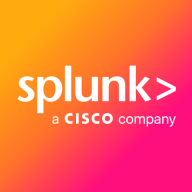![LogRhythm UEBA [EOL] Logo](https://images.peerspot.com/image/upload/c_scale,dpr_3.0,f_auto,q_100,w_64/JhFXMVCYzfCrAS3M9VeNUMi6.png?_a=BACAGSDL)

Splunk User Behavior Analytics and LogRhythm UEBA EOL compete in the user and entity behavior analytics category. Splunk holds the upper hand due to its extensive functionality and user-friendliness, despite being pricier.
Features: Splunk is known for its comprehensive data aggregation, threat detection, and seamless integration with other platforms. Its advanced machine learning capabilities and customizable dashboards are highly praised. LogRhythm UEBA provides effective server threat hunting and intuitive dashboards, simplifying the tracking of cyber incidents.
Room for Improvement: Splunk could enhance user-friendliness, adapt its pricing structure, and improve real-time correlation. LogRhythm needs to expand its use case library, enhance its dashboard and machine learning capabilities, and offer better pricing.
Ease of Deployment and Customer Service: Splunk supports deployment across cloud and hybrid environments, with strong technical support. LogRhythm focuses on on-premises deployment with satisfactory but improvable customer support.
Pricing and ROI: Splunk is known for being expensive with complex pricing, but offers significant ROI through improved efficiencies. LogRhythm is considered affordable for smaller businesses but criticized for its pricing compared to the value provided.
| Company Size | Count |
|---|---|
| Small Business | 4 |
| Midsize Enterprise | 4 |
| Large Enterprise | 4 |
| Company Size | Count |
|---|---|
| Small Business | 7 |
| Midsize Enterprise | 5 |
| Large Enterprise | 12 |
LogRhythm UEBA [EOL] offers advanced threat detection with an intuitive interface, utilizing correlation, behavior analysis, and machine learning to monitor server threats and privileged accounts effectively.
LogRhythm UEBA [EOL] provides comprehensive user behavior analytics and threat hunting capabilities, making use of customizable dashboards, reporting tools, file and registry monitoring. CloudAI adds depth by identifying unknown activities, enhancing network visibility and cyber risk reduction through constant monitoring. Users in Sri Lanka find it valuable for network stability, while other users leverage it for improved user monitoring and quick attack investigation. Despite its strong features, enhancements in integration, pricing in Asia, and documentation could improve its adoption.
What are the key features of LogRhythm UEBA [EOL]?In the financial sector, LogRhythm UEBA [EOL] is implemented to monitor privileged accounts and identify suspicious transactions swiftly. Healthcare organizations use it to safeguard sensitive patient data through behavior analysis. Manufacturing firms apply it to protect intellectual property and ensure compliance with industry regulations. Across these industries, the adaptability and analytics of LogRhythm UEBA [EOL] offer a strategic approach to cybersecurity management.
Splunk User Behavior Analytics is a behavior-based threat detection is based on machine learning methodologies that require no signatures or human analysis, enabling multi-entity behavior profiling and peer group analytics for users, devices, service accounts and applications. It detects insider threats and external attacks using out-of-the-box purpose-built that helps organizations find known, unknown and hidden threats, but extensible unsupervised machine learning (ML) algorithms, provides context around the threat via ML driven anomaly correlation and visual mapping of stitched anomalies over various phases of the attack lifecycle (Kill-Chain View). It uses a data science driven approach that produces actionable results with risk ratings and supporting evidence that increases SOC efficiency and supports bi-directional integration with Splunk Enterprise for data ingestion and correlation and with Splunk Enterprise Security for incident scoping, workflow management and automated response. The result is automated, accurate threat and anomaly detection.
We monitor all User Entity Behavior Analytics (UEBA) reviews to prevent fraudulent reviews and keep review quality high. We do not post reviews by company employees or direct competitors. We validate each review for authenticity via cross-reference with LinkedIn, and personal follow-up with the reviewer when necessary.